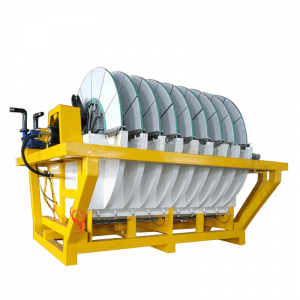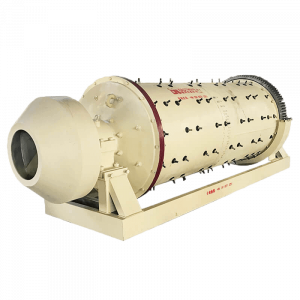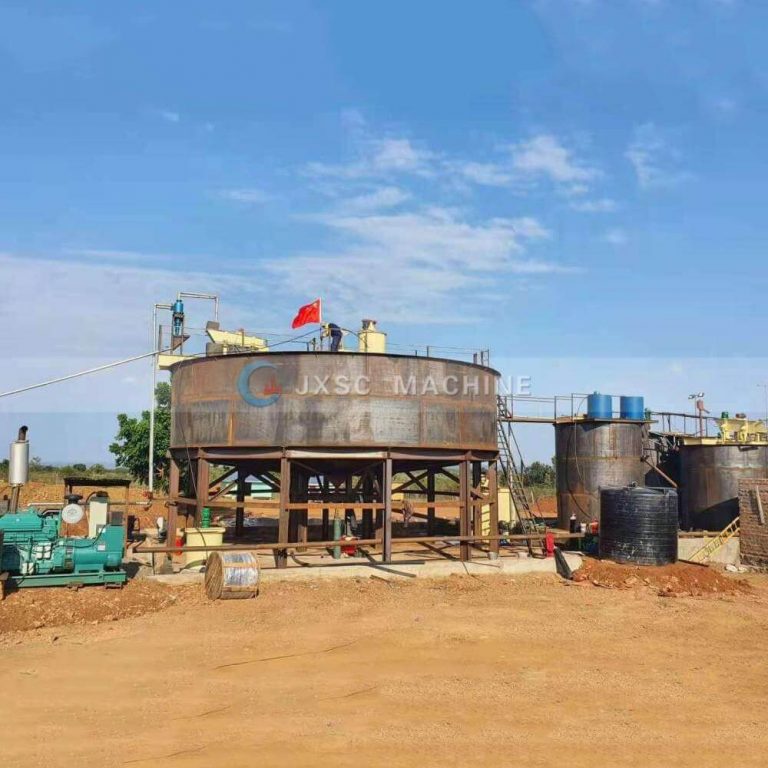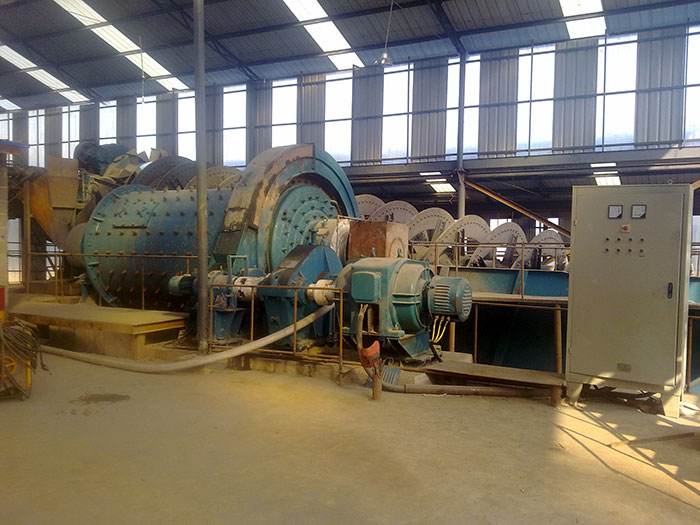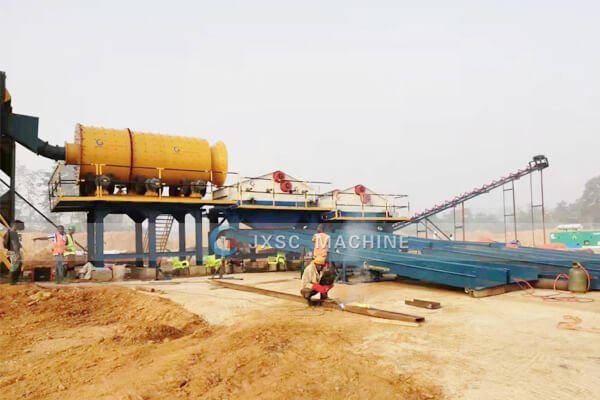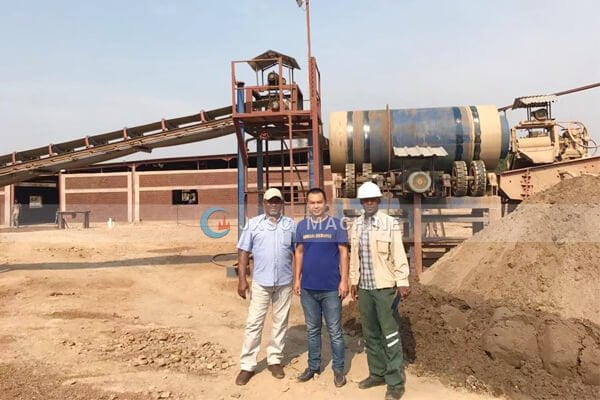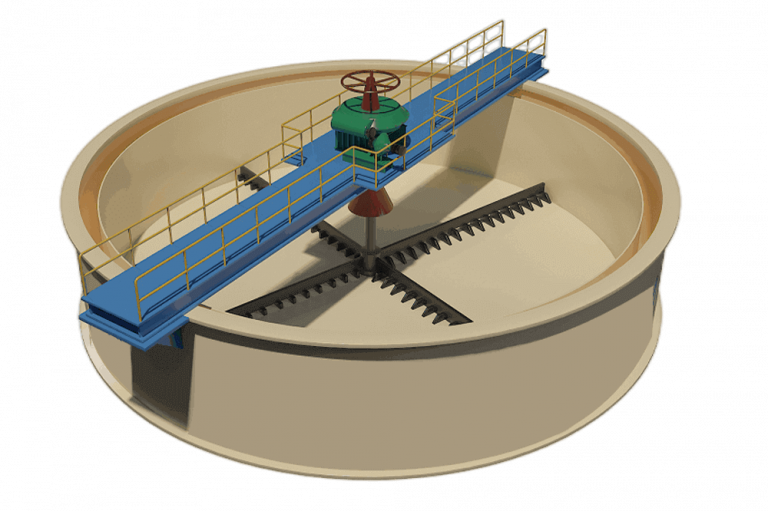
Mineral Thickener
Capacity: 1.3-1140 t/24h
Application: dewatering process of concentrates and tailings in the mineral processing plant. Our thickener is specifically designed for the mineral processing industry and tailing processing.
Products display
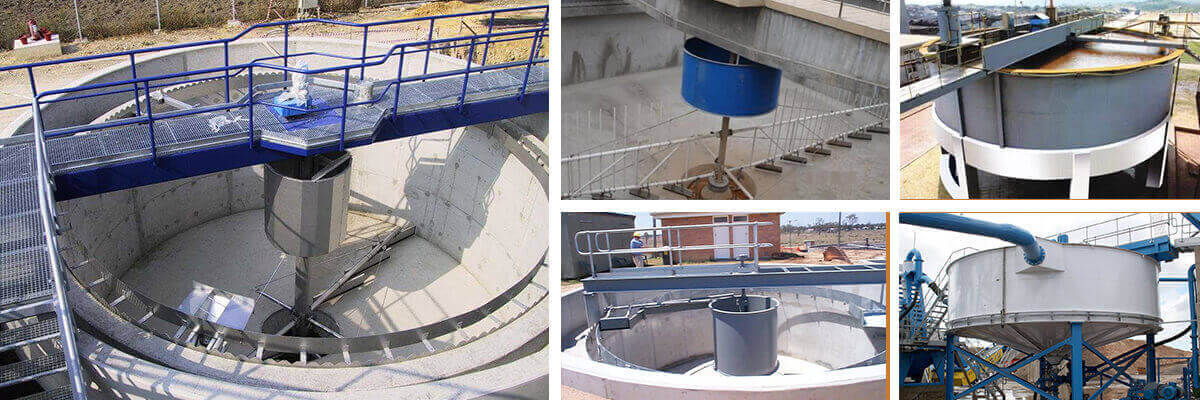
Overview
Introduction: Mineral thickeners are recognized as the most cost-effective equipment for water recovery from concentrate and tailings streams. The concentrated slurry from the thickening process is transported to the tailings dam for disposal and the recycled water is returned to the processing plant.
In thickening (also called sedimentation), the solids in a suspension settle under the influence of gravity in a tank and form a thick pulp. This pulp, and the clear liquid at the top of the tank, can be removed continuously or intermittently.
Features Of mineral thickener
- Increase the particle size of settling solid particles by adding flocculant, thus accelerating the settling speed;
- The settlement distance is shortened and the installation of the inclined plate increases the settlement area;
- Play the role of flocculation, filtration, compression and increase the treatment capacity of the thick layer of mud deposition;
- Complete automatic control facilities are equipped.
working principle of Thickener
To start with, mineral thickener works on the principle of Gravity sedimentation and the most common construction of a thickener would be iron or steel. The continuous thickener consists of a cylindrical tank. Pulp is fed into the center of the tank via a feed well placed up to 1 m below the surface of the suspension. The clarified liquid overflows a trough, while the solids that settle at the tank’s bottom are withdrawn as a thickened pulp from an outlet at the center. One or more rotating radial arms are there within the tank, from each suspended a series of blades shaped to rake the settled solids toward the central outlet.
Types Of Thickener
1. Common Thickener
The common thickener has reliable operation and low operating cost and can store and buffer the feed. It is the most widely used concentration equipment in mineral processing plants. According to its transmission mode, it can be divided into central transmission type and peripheral transmission type; According to the number of working faces, it can be divided into single-layer, double-layer and multi-layer thickeners. Because of its large diameter, this thickener occupies a large area with low production capacity per unit area. And because it is based on the gravity settlement of particles, the settlement speed is proportional to the square of the diameter of particles, so it has low efficiency in dealing with fine materials.
2. Inclined Plate Thickener
The inclined plate thickener is equipped with many inclined plates on the upper part of the cylinder tank of the common thickener. These inclined plates are inclined to the center of the thickener along the circumferential direction, and the included angle with the horizontal is about 60 °. These measures accelerate the separation of ore particles, shorten the settling time of materials, strengthen the separation and settling process, improve the concentration efficiency, reduce the capital investment, and increase the production capacity by about three times.
3. High-Efficiency Thickener
In addition to the inclined plate installed in the thickener, the high-efficiency thickener has a special flocculant adding mechanism. The diameter of the thickener can be reduced to 1 / 3-1 / 2 of that of the common thickener, and the floor area is only 1 / 9-1 / 4 of that of the common thickener. However, the processing capacity per unit area has increased dozens of times. It is a new type of high-efficiency thickener which is increasingly widely used.
The above is according to the physical structure to divide the thickener. It can also be divided into a peripheral drive thickener and a central drive thickener accord the drive mode. Different thickeners are suitable for various sites, pulp, scales, etc. If you need a thickener, you can consult our mining machinery technicians to select the most suitable one according to the situation.
models & specifications
Model | Thickener Tank | Sedimentation area (m2) | Transmission speed(r/min) | Motor | Capacity(t/d) | ||
Diameter (m) | Depth (m) | Model | Power(kw) | ||||
NZS1 | 1.8 | 1.8 | 2.55 | 0.5 | Y90L-6 | 1.1 | 1.3-5.6 |
NZS2.5 | 2.5 | 1.8 | 4.9 | 0.33 | Y90L-6 | 1.1 | 5-10.8 |
NZS3.6 | 3.6 | 1.8 | 10.2 | 0.38 | Y90L-6 | 1.1 | 5-22.4 |
NZS6 | 6 | 2.956 | 28 | 0.35 | Y90L-4 | 1.5 | 14-60 |
NZS8 | 8 | 3 | 50.2 | 0.27 | Y132S-6 | 3 | 25-120 |
NZS9 | 9 | 3 | 63.5 | 0.25 | Y132S-6 | 3 | 32-150 |
NZS12 | 12 | 3.6 | 113 | 0.19 | Y132S-6 | 3 | 50-250 |
NZS15 | 15 | 3.6 | 176 | 0.1 | Y132M2-6 | 5.5 | 70-350 |
NZS18 | 18 | 3.74 | 255 | 0.2 | Y160M-6 | 7.5 | 100-560 |
NZS20 | 20 | 4.4 | 315 | 0.2 | Y160M2-8 | 7.5 | 200-1440 |
NZS24 | 24 | 4.716 | 452 | 0.1 | Y180L-8 | 11 | 200-1440 |
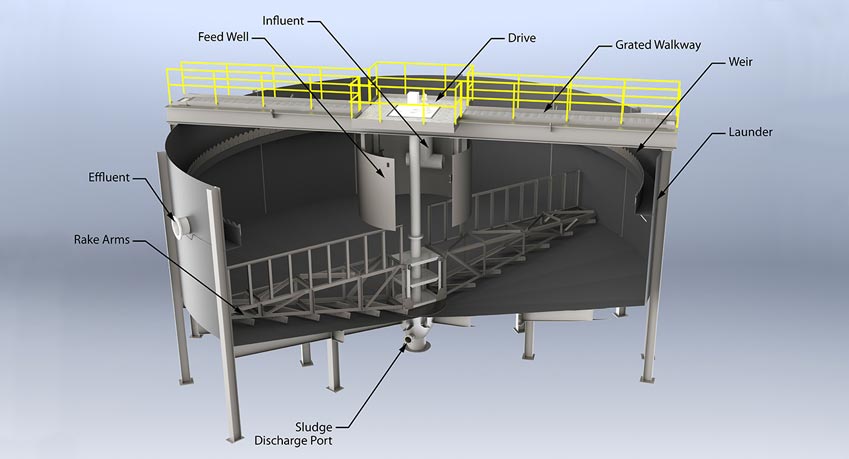

Contact Us Now
Please fill out the information below for the quotation price and engineer’s help. We will reply ASAP!
Notice:
- We do not provide jobs and have no interest in investment or partnerships.
- We provide mineral processing equipment and solutions; not buy and sell mineral /ore /materials.
- We value your privacy and keep your information safe.
